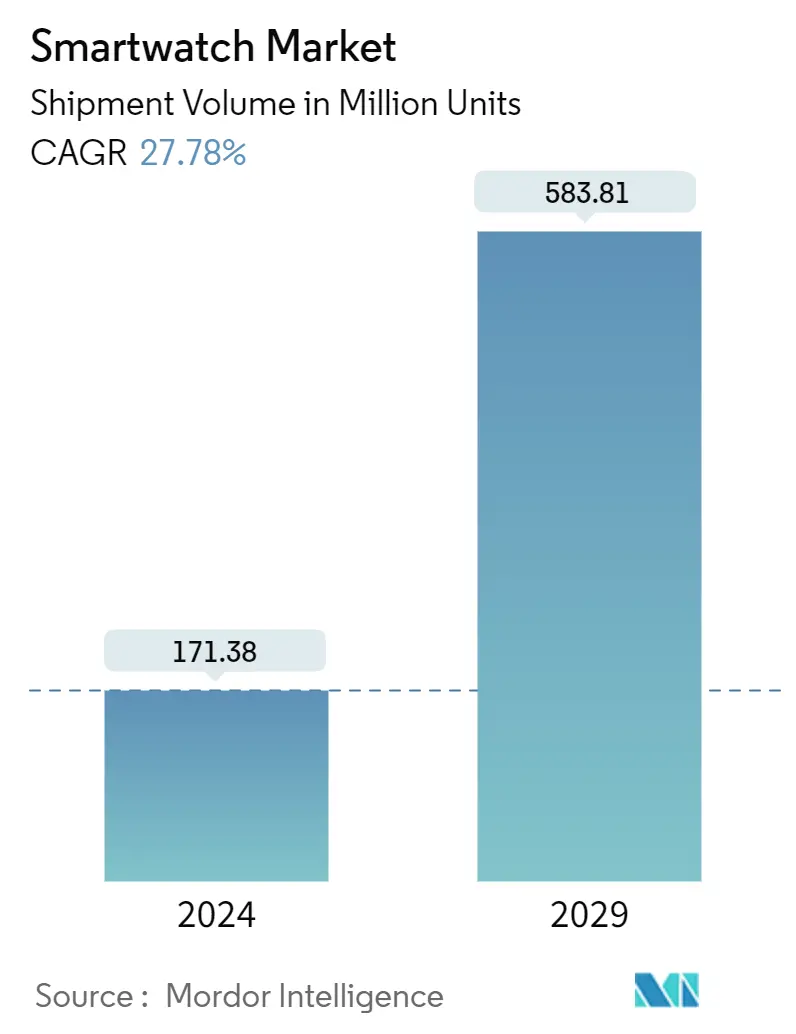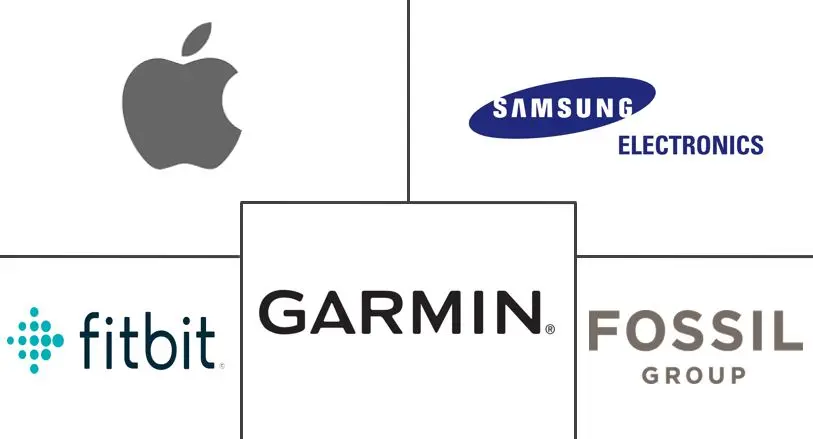Market Size of Smartwatch Industry

| Study Period | 2019 - 2029 |
| Market Volume (2024) | 171.38 Million units |
| Market Volume (2029) | 583.81 Million units |
| CAGR (2024 - 2029) | 27.78 % |
| Fastest Growing Market | Asia-Pacific |
| Largest Market | North America |
Major Players
*Disclaimer: Major Players sorted in no particular order |
Need a report that reflects how COVID-19 has impacted this market and its growth?
Smartwatch Market Analysis
The Smartwatch Market size in terms of shipment volume is expected to grow from 171.38 Million units in 2024 to 583.81 Million units by 2029, at a CAGR of 27.78% during the forecast period (2024-2029).
Due to the rising penetration rates of urbanization, the demand for aesthetically appealing advanced products to serve better the consumers' requirements, such as time schedules and multiple features in one device, has been driving the global need for smartwatches. Moreover, the huge millennial population has been adopting smartwatches due to increased spending on tracking and luxury standards for their regular work hours.
- Currently, smartwatches are designed to be paired with smartphones (via Bluetooth), which function as information gateways so that these watches can share phone notifications, such as text messages, email notices, or application alerts. However, smartwatches are not interchangeable since they can usually only be paired with a limited number of compatible smartphones. For instance, Samsung's Gear A smartwatch only works with Samsung Galaxy series smartphones, and the Apple Watch only works with iPhones. As a result, current smartwatches available from mobile device manufacturing companies are more like smartphone accessories than standalone devices since they require access to a compatible smartphone to relay additional useful information to their owners.
- Changing lifestyles and readiness for technology adoption in lifestyle solutions have increased the demand for wearable technology. This demand has been supported by new product launches and entrants venturing into the market. As more companies venture into the smartwatch market, the need for differentiating the product offerings becomes essential. For instance, Fitbit launched Fitbit Versa and Fitbit Charge 32017-2018. Fitbit Versa is a smartwatch that requires a bigger screen and battery power. The dependency on higher-resolution screens and battery technology has increased over the years to please consumers, resulting in investment in these segments to meet customers' expectations.
- Increasing health consciousness among consumers is a crucial factor driving the growth of the smartwatch market. A smartwatch enables them to take necessary precautions according to their health. Further, Doctors can easily monitor the health status of patients remotely and can maintain, prescribe or treat them as required. For instance, all the new Apple Watch since Series 5 can track heart rate, nervous system activities, emergency or inactivity warnings, and health events.
- Although the adoption of wearables has been gaining traction for the past few years, the concern over data privacy persists. Moreover, for smartwatches, the target consumers are individuals people, where awareness of data security is relatively low compared to enterprises. Even though data from smartwatches are not information-rich, risks are likely to increase further if the device comes with support for internet connectivity, as they can be operated away from the paired device. Payment services in such cases can be misused.
- The introduction of health measures to self-track the COVID-19 symptoms and increasing consumer interest in personal health and wellness during global pandemic lockdowns presented a significant opportunity for the smartwatch market. Due to the pandemic, consumers were avoiding stepping out and visiting crowded spaces, such as gyms and fitness centers. This accelerated the requirement for fitness products such as smartwatches.
